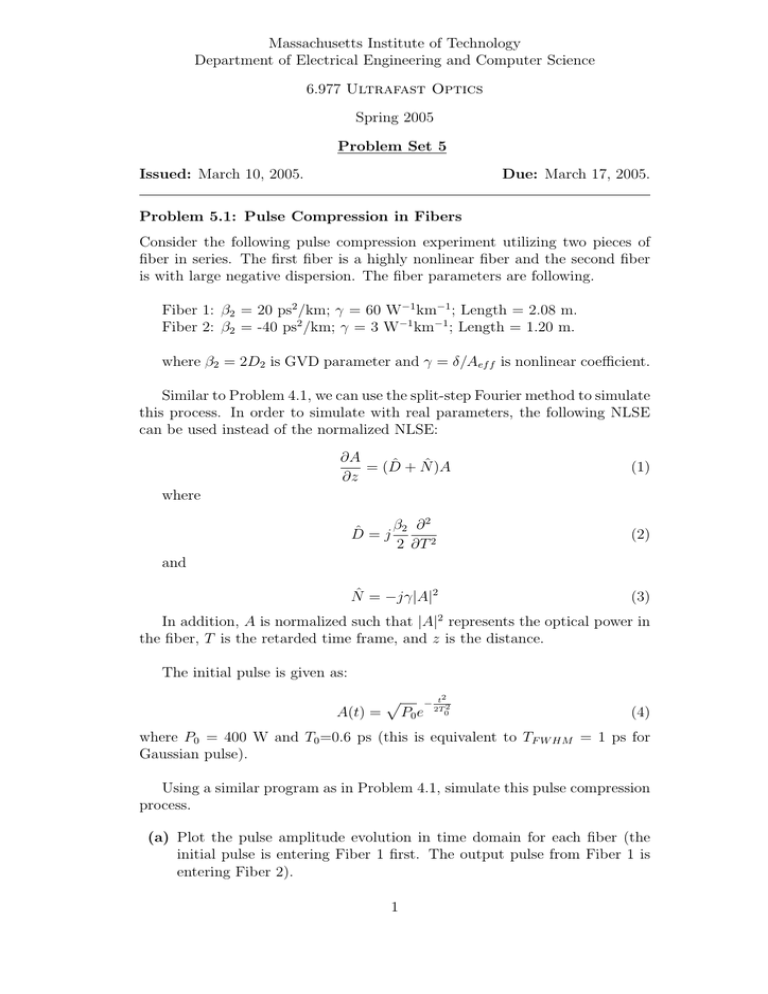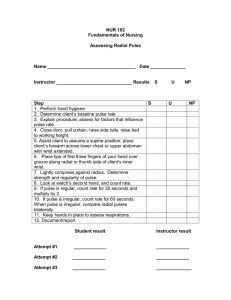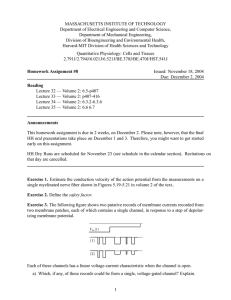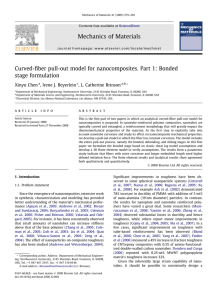Massachusetts Institute of Technology Department of Electrical Engineering and Computer Science
advertisement

Massachusetts Institute of Technology Department of Electrical Engineering and Computer Science 6.977 Ultrafast Optics Spring 2005 Problem Set 5 Issued: March 10, 2005. Due: March 17, 2005. Problem 5.1: Pulse Compression in Fibers Consider the following pulse compression experiment utilizing two pieces of fiber in series. The first fiber is a highly nonlinear fiber and the second fiber is with large negative dispersion. The fiber parameters are following. Fiber 1: β2 = 20 ps2 /km; γ = 60 W−1 km−1 ; Length = 2.08 m. Fiber 2: β2 = -40 ps2 /km; γ = 3 W−1 km−1 ; Length = 1.20 m. where β2 = 2D2 is GVD parameter and γ = δ/Aef f is nonlinear coefficient. Similar to Problem 4.1, we can use the split-step Fourier method to simulate this process. In order to simulate with real parameters, the following NLSE can be used instead of the normalized NLSE: ∂A = (D̂ + N̂ )A ∂z (1) where β2 ∂ 2 2 ∂T 2 (2) N̂ = −jγ|A|2 (3) D̂ = j and In addition, A is normalized such that |A|2 represents the optical power in the fiber, T is the retarded time frame, and z is the distance. The initial pulse is given as: A(t) = � P0 e − t2 2T02 (4) where P0 = 400 W and T0 =0.6 ps (this is equivalent to TF W HM = 1 ps for Gaussian pulse). Using a similar program as in Problem 4.1, simulate this pulse compression process. (a) Plot the pulse amplitude evolution in time domain for each fiber (the initial pulse is entering Fiber 1 first. The output pulse from Fiber 1 is entering Fiber 2). 1 (b) Plot the pulse amplitude evolution in frequency domain for each fiber (the initial pulse is entering Fiber 1 first. The output pulse from Fiber 1 is entering Fiber 2). Suggestion: since the pulse width is in the ps range, it may be easier to normalize all the time units in ps and frequency units to THz. Problem 5.2: Relaxation Oscillations We consider a continuously operating Ti:sapphire laser at a wavelength of λ0 = 0.8 µm, 100 MHz repetition rate, pumped with 5 W power. The laser threshold is 0.5 W. The upper state lifetime of Ti:sapphire is 2.5 µs and a 10% output coupler is used. (a) Is the relaxation oscillation in this laser over- or under-damped? (b) What is the relaxation oscillation frequency and the damping rate of the relaxation oscillations as a function of the pump parameter r? (c) Plot the root locus of the complex relaxation oscillation frequency as a function of the pump parameter. What is the result for the pumping conditions described above? (d) How much pump power is required to suppress relaxation oscillations? 2








